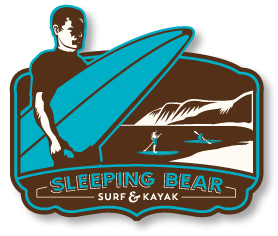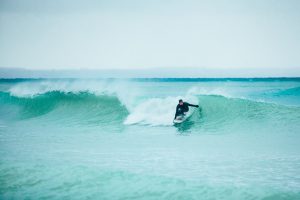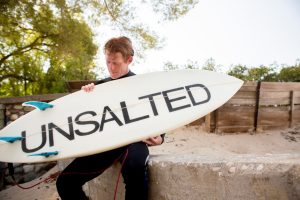 Since we opened the state’s first full-service, and longest standing surf shop, in 2004, we have numerous people coming in asking, “Can you surf on the lakes?” or flat out doubting us: “You can’t surf on the lakes.” All while Lake Michigan will be erupting just down the street. Although the lakes are not as enormous as the oceans, our Great Lakes are very much inland-seas, and produce mind-blowing, incredible surf for those who dedicate some time to the search and the process.
Since we opened the state’s first full-service, and longest standing surf shop, in 2004, we have numerous people coming in asking, “Can you surf on the lakes?” or flat out doubting us: “You can’t surf on the lakes.” All while Lake Michigan will be erupting just down the street. Although the lakes are not as enormous as the oceans, our Great Lakes are very much inland-seas, and produce mind-blowing, incredible surf for those who dedicate some time to the search and the process.
Surfing on the Great Lakes is different from surfing on the ocean due to the fact that wave periods are much shorter than that of ocean waves, meaning there is less time between each individual wave, and therefore less power & size, due to the size of our Great Lakes.
Waves are caused primarily by wind blowing across the surface of the water, and mighty storm systems in and around the Great Lakes region. Therefore, lake surfers rely heavily on the weather to forecast surf.
The best time to surf on the lakes is in the late summer, fall and winter, when storm systems begin to move more frequently across the lakes, bringing cold air & strong winds. Typically, surf days don’t come with blue skies and tropical weather, but rather onshore winds and rain or snow. Due to the amount of wind generally prevalent on surf days, we seek protection rather than a big open beach break for the cleanest wave. There are endless spots up and down the coastline throughout all of the Great Lakes that are conducive to quality surf. Piers, points, bays or break-walls are great spots to scour for a uniform wave, but all dependent on the wind direction.
There aren’t any hazards on a lake, right?! Wrong. Many come to the Great Lakes assuming the power of the lakes associated with their classification as a lake. Truth is, our lakes are mighty, and come with most of the same hazards you would find surfing in the ocean. In 1975, the famous Edmund Fitzgerald was taken down by 30 foot waves on Lake Superior. No, we don’t have reef or sharks, but there are many breaks with a rock bottom, or shallow sand bars that can be dangerous. The leading cause of death here on the Great Lakes is via rip currents, and although are rarely a threat to surfers, can be prominent in the lineup. Rip currents form next to piers, at river mouths, and can form on sandbars in the waves. Long shore currents can also be hazardous, as they can push surfers down the length of the beach which could lead to fatigue paddling against the current, or push surfers into an area where physical hazards were not noted upon entry in the water. To learn more visit The Great Lakes Surf & Rescue Project.
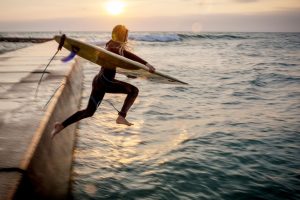 Entering the water with the proper equipment is majorly important. Weather can change rather quickly on the lakes, and therefore that can be a hazard in itself. Not to mention, hypothermia is a real concern, which is why entering the water with suitable gear (thick neoprene) is so important, especially when choosing to surf during colder months when the air or water temperatures drop below 60 degrees. Always make sure you have a leash attached to your board and ankle before entering the water. Paying attention to weather patterns, hazards, paddling out with a buddy, and knowing proper etiquette will allow you to maximize your fun in the lineup. When in doubt, don’t paddle out.
Entering the water with the proper equipment is majorly important. Weather can change rather quickly on the lakes, and therefore that can be a hazard in itself. Not to mention, hypothermia is a real concern, which is why entering the water with suitable gear (thick neoprene) is so important, especially when choosing to surf during colder months when the air or water temperatures drop below 60 degrees. Always make sure you have a leash attached to your board and ankle before entering the water. Paying attention to weather patterns, hazards, paddling out with a buddy, and knowing proper etiquette will allow you to maximize your fun in the lineup. When in doubt, don’t paddle out.
Surf etiquette is set in place for the safety and enjoyment of everyone in the water. As our Great Lakes surf community continues to grow, and more people share the same lineup, its important to be respectful of the people also trying to enjoy the water. The main injuries associated with surfing occur when a surfer is hit by a surfboard.
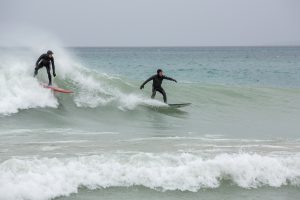
Therefore hold onto your board, and look out for other surfers. Make sure you have complete control over your equipment before heading to a break or the line up. This means staying out of the way of others. The golden rule of surfing is to not drop in on anyone. The person on the peak of a wave gets that wave.The deepest one in the wave gets it. Frankfort pier is an easy example: if you are surfing next to it, the one closest to the pier gets the wave. Always remember to check both ways before dropping in. If someone is deeper, let them go. Once you’ve caught a wave, or are working to paddle out on the inside, make sure you spend the least amount of time on the inside as possible. When you are inside, you are in the way. Always head to the outside staying out of the way. If the wave is breaking surfers left, head out surfers right. Remember to always surf in an area that meets your ability. If you are unfamiliar with a spot, talk with someone before entering the water. Share a smile, say hello, be safe and have fun! Oh, and keep the beach cleaner than you found it will ya?
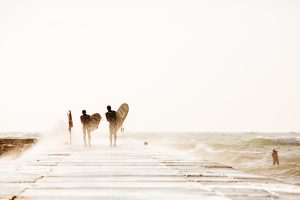
We strongly suggest that before you get in the water for the first time, take a surfing lesson. Surf lessons will give you a great foundation, and teach you important safety guidelines. Check out our surf lesson page for more info.
If you’re interested in learning more about surfing the Great Lakes or getting connected with someone in the community, contact us at 231.326.9283 (WAVE) or visit our Forecasting page. Or if you’re in need of some SBSK gear, be sure to visit our Shop page for boards, neoprene & more.
